
Help yourself to our creative, hands-on activity ideas for teaching All-of-a-Kind Family. We've been teaching children's literature in experiential ways since 2010, and we'd love to help you engage and inspire YOUR kids!
It's astounding how much they'll learn while they're "just" having fun!
When kids get to do things the characters did, they GET IT. With a little guidance, they know why that experience matters. They understand its role in the story, and what secret meaning it has. They see that literature is clever and cool. They get how fun great books are—and they want to read more.
Read on for:
Creative Teaching Ideas
Prep Tips & Printables
FAQ & Support
Learning Links
Our activities are perfect for homeschoolers, co-ops, classrooms, libraries, book clubs, and families.
for use with some of the activity ideas on this page
for teaching All-of-a-Kind Family by Sydney Taylor
LitWits makes a small commission (at no extra cost to you) on supplies or books you buy through our Amazon affiliate links.
Creative Teaching Idea #1
A table of objects pulled “straight from the story” can lead to all sorts of wonderful discussions and wide-eyed, “aha!” moments. Throughout your teaching experience of this book, pause to discuss and/or pass around relevant props. Items unique to the setting help kids understand “what that was like,” and those symbolic of themes help kids literally grasp big ideas.
[The cup] was made of lustrous pink and white china and on its front, raised gold lettering . . . spelled out the name "FATHER." — "Papa's Birthday" (This cup is a family heirloom of ours.)
It was Ella's turn to have her book stamped. — "The Library Lady"
Now she could lift the china shepherd and shepherdess. She liked to handle these, especially the shepherdess, so dainty in her pink-and-blue dress. — "Dusting is Fun"
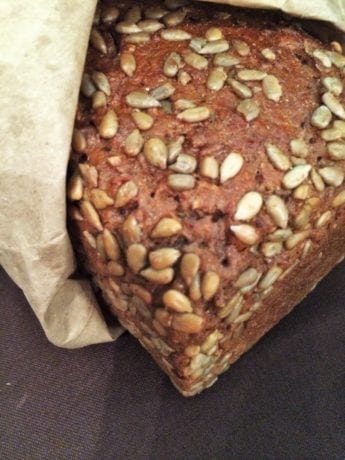
Rye bread, from the chapter "Who Cares If It's Bedtime?"
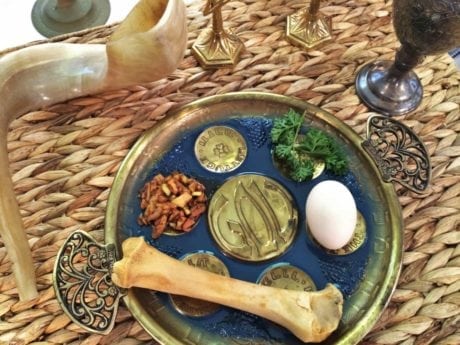
A clean white napkin covered the Seder platter which Father had arranged earlier. — "Mama Has Her Hands Full"
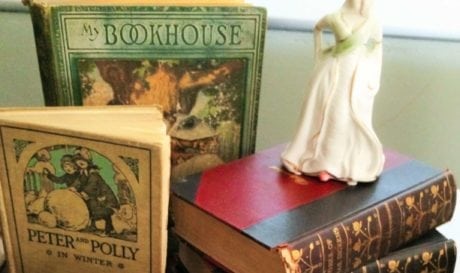
"Books!" the children all shouted at once. "How did you get them?" . . . [They] trooped back to the front of the shop to show Papa their finds. - "Rainy Day Surprise" (Pictured: the library book Sarah lost; “volumes of Dickens,” and “the book of fairy tales”)
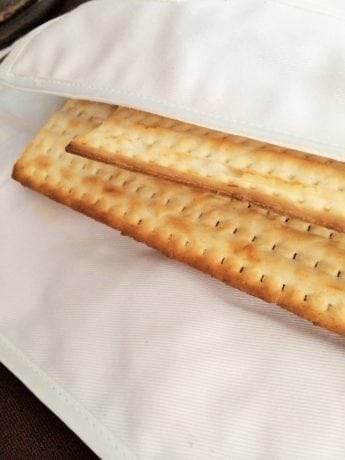
Papa broke the middle piece of matzoh and put a large piece away between the pillows on his chair. — "Mama Has Her Hands Full"
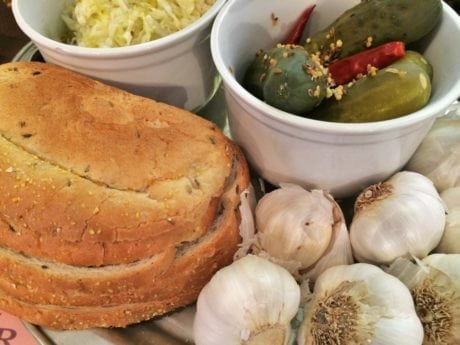
Market smells: Almost anything could be bought at these stands. There were pickle stands where the delicious odor of sour pickles mingled with the smell of sauerkraut and pickled tomatoes and watermelon rind. . . Here coffee was bought in the bean, for every household had its own wooden coffee grinder . . . Inside Mama's favorite fish store, the smell was not so pleasing. — "The Sabbath"

Mama set two braided rolls of white bread on the table at Papa's place.. . . . In turn, Mama and the children recited the prayer thanking God for giving them this bread. — "The Sabbath"
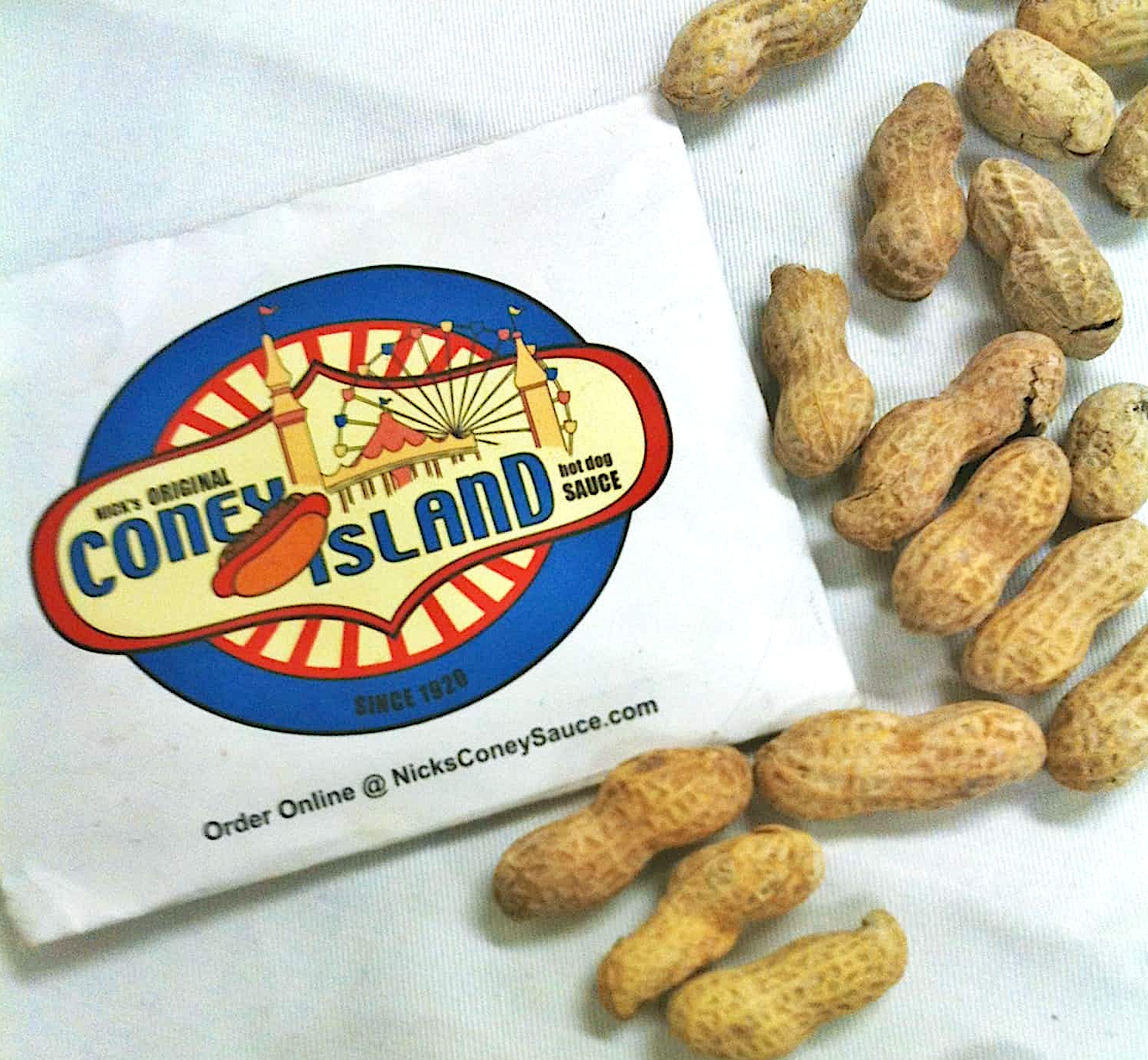
"Look — Coney Is-land,” Charlotte said, rousing Ella from her dreams. She pronounced it just like that. ... Coney Is-land or Coney Island, they were here at last. —"Family Outing"
LitWits makes a small commission (at no extra cost to you) on supplies or books you buy through our Amazon affiliate links.
Creative Teaching Idea #2
We think it's important to know where your books have come from. After all, without Sydney Taylor, we wouldn't have All-of-a-Kind Family! This activity introduces your kids to the author through her daughter, and lets them practice some note-taking, too.
Photo from the collection of the author's daughter, Jo Taylor Marshall
The 48-minute video below shares the life story of Sydney Taylor through her daughter, 88 at the time of recording. If you'd like a worksheet for author note-taking and conversation-starting, there's one in our printables set.
For a shorter introduction, share some highlights from the Literary Ladies Guide:
In November 1950 she was told she'd won first place and a big cash prize for her manuscript—but she hadn't even entered the contest! Her husband had found her manuscript in a closet, and had it typed up and submitted it without telling her.
All-of-a-Kind Family is about her own life in a family of German Jewish immigrants who arrived in New York on a steamer in 1901. Born Sarah Brenner, she's pictured here holdling an apple:
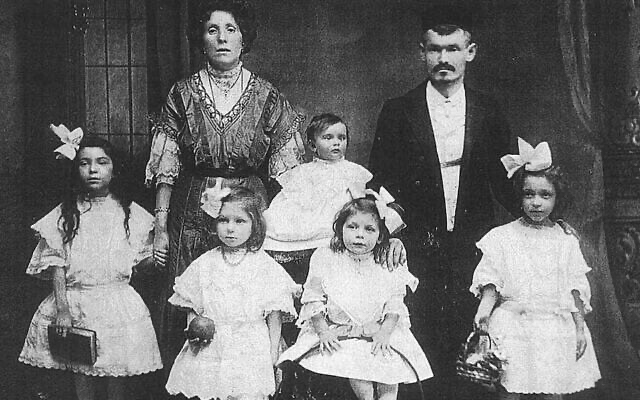
Photo: Literary Ladies Guide, from collection of Jo Taylor Marshall
The Brenner children really did do well in school, and loved going to libraries, just like in the book. And they had a little brother named Charlie.
She changed her name to Sydney Brenner at 16, anticipating a career on stage. She dropped out of high school to help support her family as a clerk while attending night school.
After marriage to Ralph Taylor, she became an actress and a dancer, and then, when baby Joanne was born in 1935, a stay-at-home mom.
There are four sequels to her most famous book, and after she died in 1978 her husband and the Association of Jewish Libraries established a book prize in her honor.
Talk about the ways the author’s real life shows up in her story. Point out that every author is present in his or her story, whether the connections are obvious or subtle.
For further information
You might be interested in Sydney Taylor's well-reviewed biography, which came out in 2021. We also encourage you to read through the interviews and biographical articles about Sydney Taylor in our Learning Links.
Creative Teaching Idea #3
During the time when All-of-a-Kind Family takes place, the Lower East Side of Manhattan was the largest Jewish neighborhood in the entire world. In this activity, kids locate it on a map, find out why it grew so fast, and pick up a little Yiddish.
First, ask the kids if they know when this story takes place. (When Sarah tears off the calendar page while she’s dusting, we learn that it’s November 1912.)
Point out that from 1901-1910, there was a massive Jewish immigration from Russia and Germany to New York. Locate those countries on a map of Europe or a globe; then find New York City on a map of New York.
Have the kids circle the Lower East Side on a printed map of Manhattan (or on the setting worksheet in our printables set).
Once they have their geographical bearings, share some information about the timeline and period info. (There's a history worksheet for this in our printables set.) The Tenement Museum website defines "tenement," and provides lots of photos and facts to support discussing life in a tenement building, especially back then. (It was common for a family of ten to live in 325 square feet!)
Ask the kids to imagine the smells—some of which are described in the third chapter of the book—and to think what problems these conditions might have caused for residents. Scarlet fever, for instance, caused devastating epidemics in the 19th and early 20th centuries – in 1914 about five percent of people who caught it died. The bedding and belongings of those who caught it were sometimes burned to keep the disease from spreading.
While you're in "time and place" mode, you might share the meanings of a few antiquated vocabulary words like those below (or do the "Get Acquainted" vocabulary worksheet in our printables set):
These may not be used often in conversation, but they do come up fairly often in literature.
LitWits makes a small commission on supplies or books you buy through our Amazon affiliate links.
Creative Teaching Idea #4
Chapters 1 and 4
All-of-a-Kind Family opens with "library day” and a missing library book—later, the girls even play "library lady" and pretend to stamp borrowed books. In this activity, kids make an old-fashioned NPYL checkout card and pocket, circa 1912, and glue it to a new endpaper they've designed and drawn.
Library books are so important in this story—for one thing, the girls loved books but couldn't afford them; as a plot point, the missing library book indirectly brings Kathy and Charlie together. All through the story, books, libraries, and reading are treated with awe.
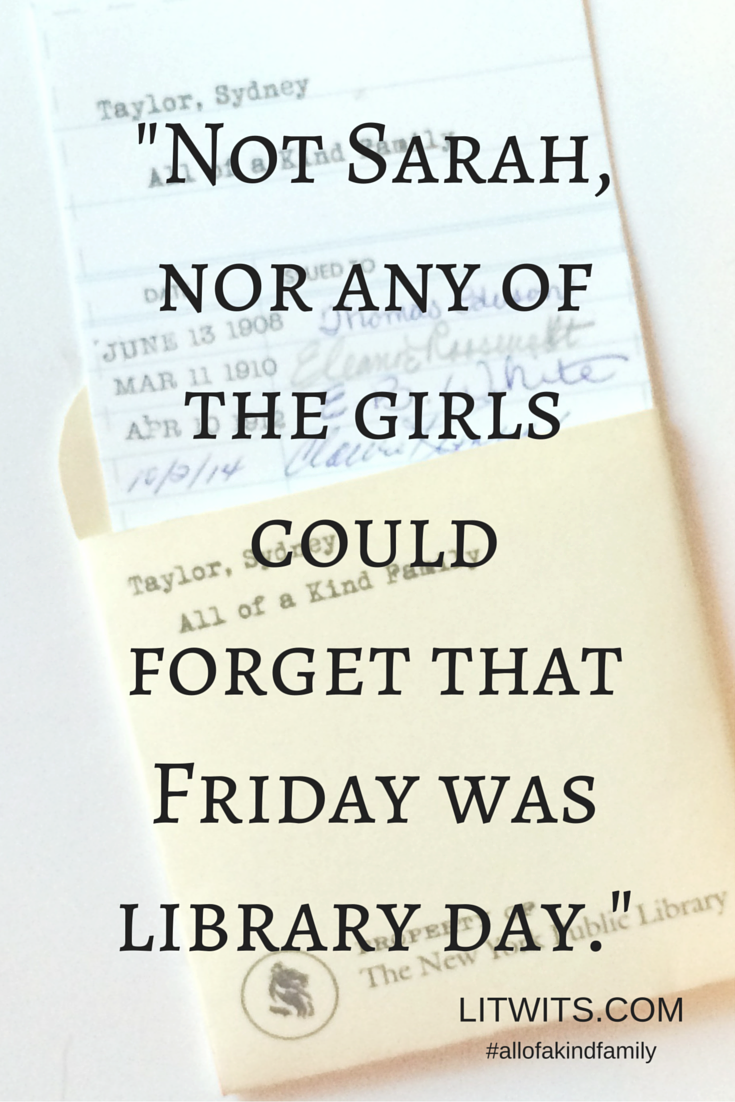
SETUP
Show the kids what old-fashioned library books looked like inside in 1912—the endpapers and pocket with hand-written checkout card— and tell them they'll get to create their own versions of those.
SUPPLIES
pocket folders, if using to store worksheets)
colored pencils and/or markers
library checkout card OR the template in our printables set, printed on white cardstock
library pocket OR the template in our printables set, printed on manila/cream cardstock
library stamp and ink (optional)
DIRECTIONS
Show the kids what end papers are, and how alluring those can be in themselves! Then tell them it’s their turn to illustrate one page of their own.
Have them close their eyes and think of a scene from All-of-a-Kind Family. Ask them to concentrate on the colors, smells, sounds, and some of the details. When they open their eyes, they’ll have 15-20 minutes (or whatever you've got) to draw that scene. Tell them not to put something important in the middle of the page, since that's where the pocket will go.
While they draw, play Yiddish folk music and:
talk about the value of the library, in the book and in real life
show what was probably the story’s real library branch (now Tompkins Library)
ask the kids how the library would even know that Sarah had lost Peter and Polly in Winter
since that book was published two years after the story takes place, this is a good time to tell the kids about anachronisms
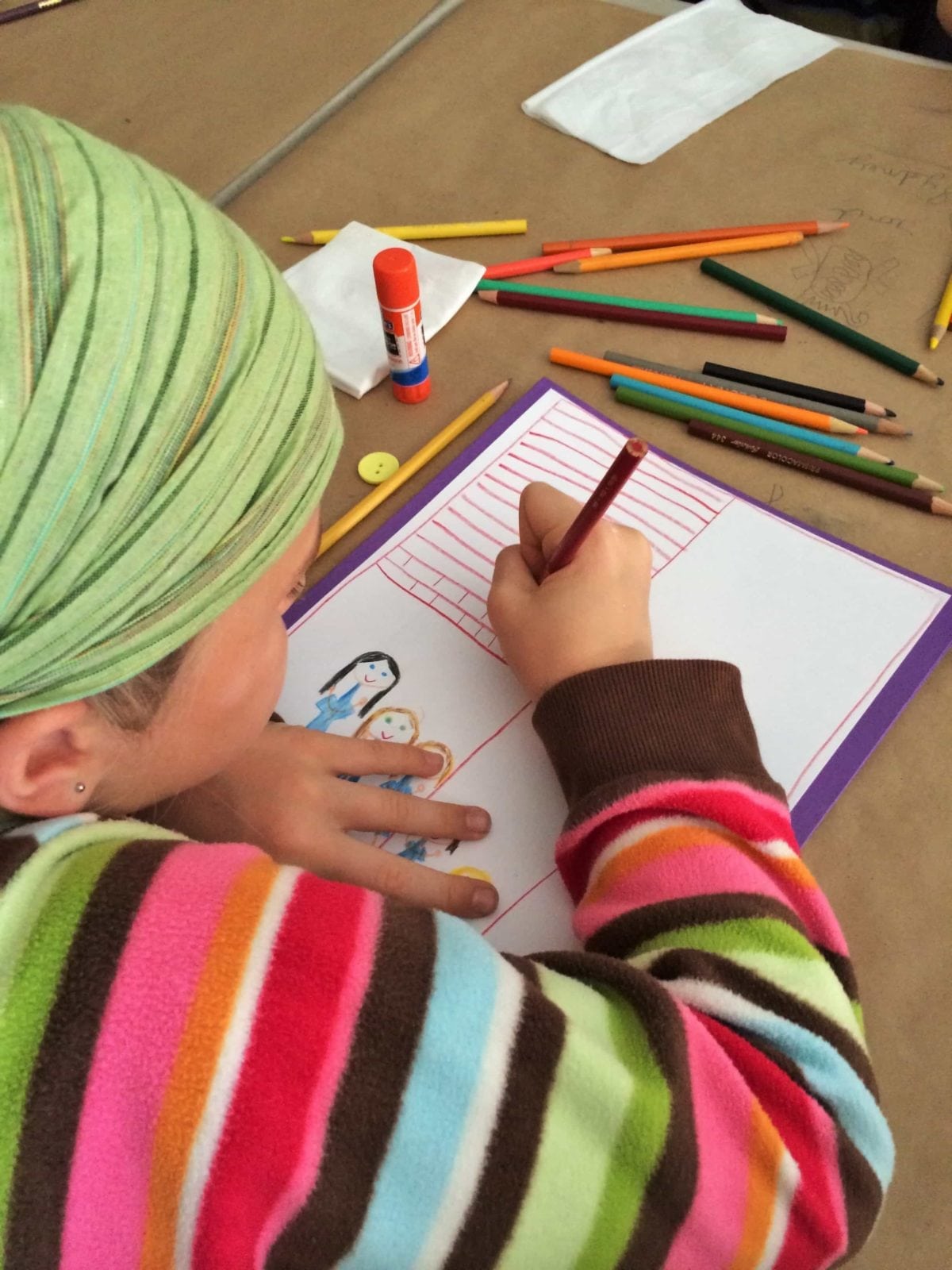
Have them cut, fold, and glue the pocket to the “endpaper.”
Tell them to imagine their book has been checked out by several famous residents of the era first (provide some names and, if you have time, some quick background).
Here are a few:
Henry Louis Gehrig, 1903-1941
Anna Eleanor Roosevelt, 1884-1962
Thomas Edison, 1847-1931
Nellie Bly, 1862-1937
Have them write those "celebrity" names on the cards, then add their own underneath. They'll love being the next one to check out All-of-a-Kind Family after Eleanor Roosevelt or Thomas Edison!
To finish up, be the real library lady, and stamp the card for them—or let them play "library lady" and do it themselves.
LitWits makes a small commission on supplies or books you buy through our Amazon affiliate links.
Creative Teaching Idea #5
Chapter 2
Mama’s button game doesn’t just get Sarah to dust—it teaches us that any task can be turned into fun! This activity recreates a scene from the story, and helps kids grasp what a difference positivity can make. And there's another sweet payoff, too!
Along with the value of choosing a positive attitude, the button-hunting scene in All-of-a-Kind Family demonstrates the motivating power of a quest—that often the hunt is more valuable than the treasure.
SETUP
Before the kids arrive, hide the buttons around the room, one per child. (Or more—each will be traded for a penny.)
When you tell your kids they're going to get to dust for buttons, they'll react as if you'd said they could pan for gold. Point out that the reason this sounds so fun is that Sarah had fun doing it in the book, so their expectations are that it will be fun for them too.
Remind them that they can always set their own expectations, and make almost anything fun!
SUPPLIES
buttons hidden around the room, one per child
tissues as dusting clothes
old-fashioned candies in jars (in the book: licorice drops, red cherry hearts, jelly beans, candy corn, lemon drops, caramels, chocolate coins, and Indian Bars (we learned that these and the "peanut bars" mentioned throughout are Goldenberg's Peanut Chews, founded in 1917—an anachronism),
a candy shop sign - make your own or use the one in our printables set (Mrs. Blumberg’s store is under new ownership, now operating as LitWitz)
faux pennies (optional) or real, or even real pennies from the era
DIRECTIONS
Tell the kids that after they’ve each found one button, they can trade it for a penny (real or faux), which they’ll get to spend it at the “candy shop!”
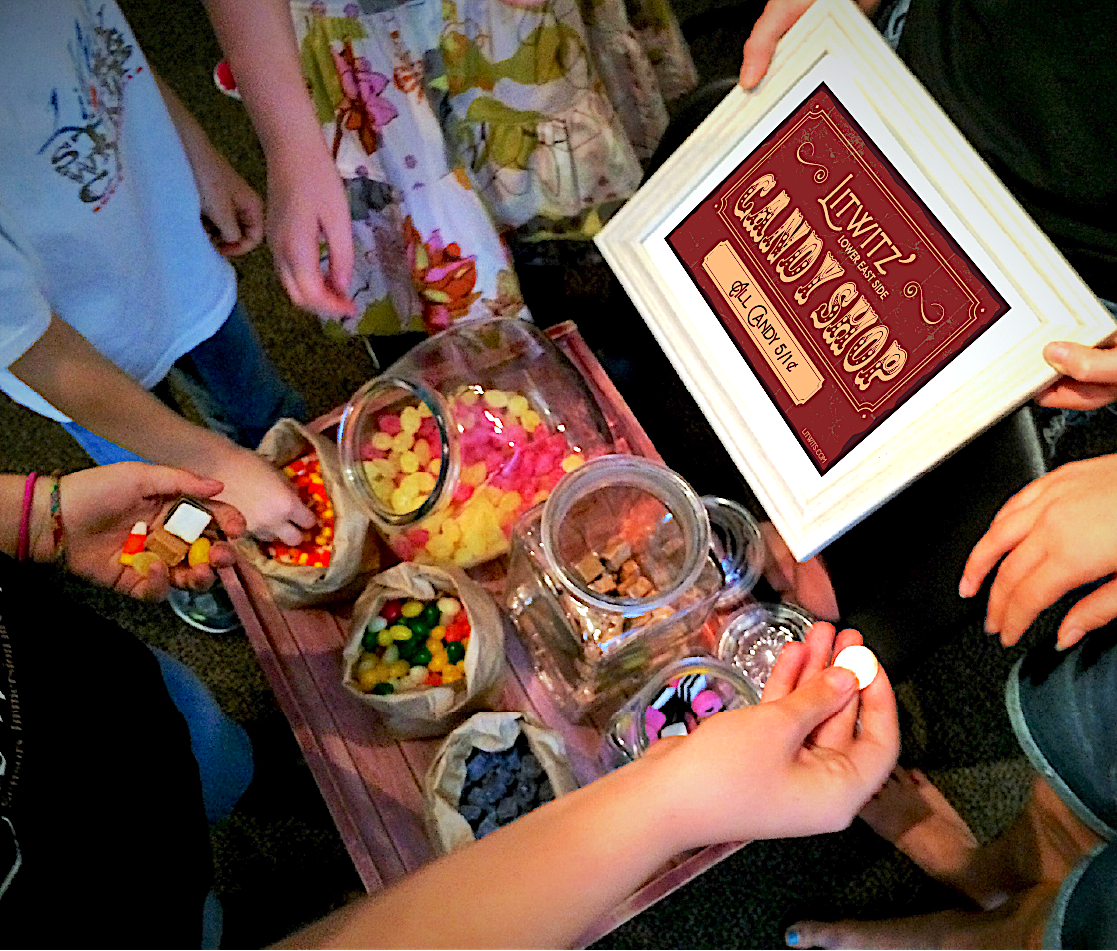
Or you can use your Mama wisdom and save that part for later. If you wait until the end of the messy Succah project, and tell them “When the floor and tables are perfectly clean, you get to spend your penny in the candy shop!” the entire room will be spotless in under a minute.
LitWits makes a small commission on supplies or books you buy through our Amazon affiliate links.
Creative Teaching Idea #6 (BookBites)
Chapter 5
Kids love tasting unfamiliar foods from a story, and the sensory Rivington Street market provides lots of choices. In this "BookBites" activity, kids order from vendors in Yiddish and nosh on kosher dill pickles, matzo bread, and salty, peppery chickpeas.
When Mama and the girls go to the Rivington Street Market, it seems everyone is speaking in Yiddish but them. Start off by teach the kids this phrase that Henny could have used when she bought her "fat, juicy sour pickle:"
Zayt azoy gut, git mir (please give me)
Then have them line up in front of the pickle seller (that's you) and give each child an "after-lunch penny" (real or faux). Before paying, each must say:
Zayt azoy gut, git mir a fat juicy sour pickle!
Hand them their purchase in a pickle bag, and ask them to hang on to it until everyone else is served. (Remind them that Henny's sisters had to wait patiently for their pickle bites, too.)
Then ask everyone at once to "do what Henny did:"
She ate it greedily, with noise and gusto, while her sisters watched, their mouths watering.
You will also need napkins and maybe some wipes at hand. :)
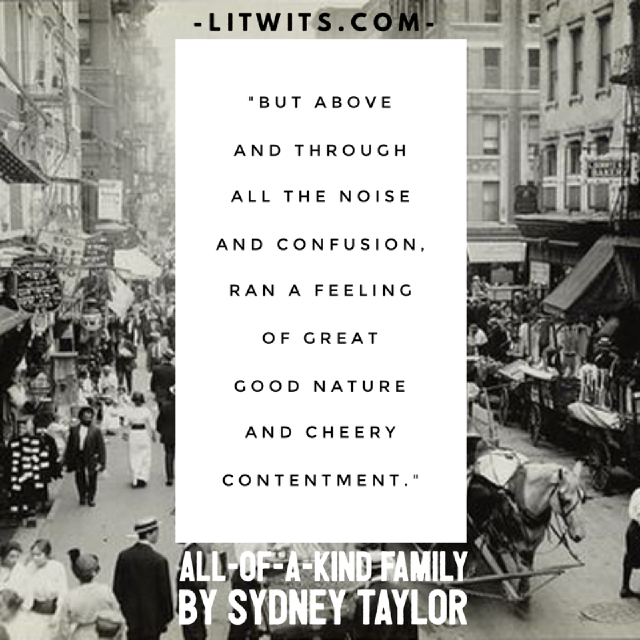
Another option
With the help of a market vendor named Reb Sloh Kueker, better known as Crawk Paut, you can also/instead serve hot roasted chick peas in a paper cone. Here's the recipe!
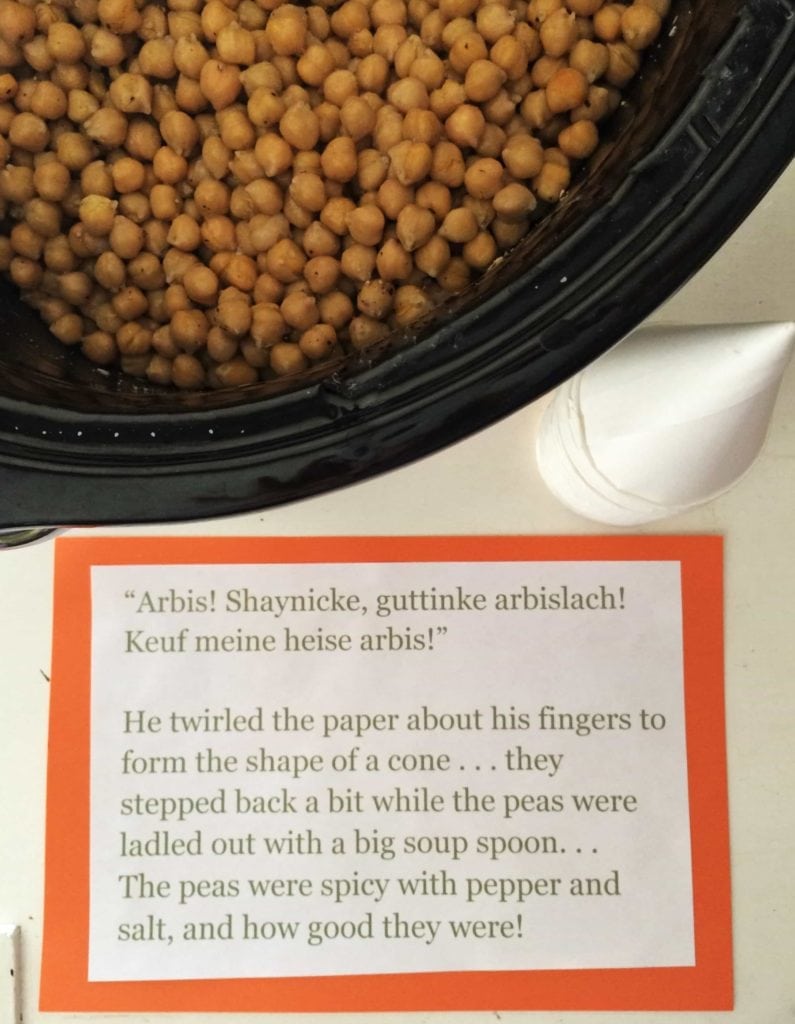
While the kids nosh, have them learn more Yiddish phrases—there's a worksheet for that in our printables set.
To wrap up, play the Yiddish folk song “Tumbalalaika” while the kids are cleaning up—just like the girls would in the story, no doubt.
LitWits makes a small commission on supplies or books you buy through our Amazon affiliate links.
Creative Teaching Idea #7
Chapter 8
Some days you just don't feel like soup. But when Sarah's reluctance to eat her soup turns to rage, everything goes rapidly downhill for the whole family—an effective character lesson for Sarah and for readers. In this creative writing activity, kids get to write her a note to help her out of her funk.
At dinner, Mama refuses to let Sarah eat anything else until she’s had at least one spoonful. Very quickly Sarah's reluctance turns to rage.
The children all felt sorry for her. They knew she was being silly, but they could understand. Everybody felt stubborn once in a while.
Later, outside, her sisters gather around her in sympathy, but she tells them to leave her alone, and pushes them away. She doesn’t want their attention—and their sympathy is sure to make the tears start up again.
But we, the readers, are full of sympathy. We've all been there. We want to slip into the story and help her feel understood.
Tell the kids that they get to do just that—pretend they're a sister who got pushed away, and write Sarah a note to help her feel understood.
(If you'd like, there's a worksheet for this in our printables set.)
When they've finished, Invite them to read their writing aloud, and discuss how Sarah would feel after reading the note.

Ask them to think of one of their own family’s rules, and the reasons for it. What are the consequences of ignoring it? If that rule didn't exist, how would life be easier, or more fun? What not-so-easy-or-fun things might happen after awhile?
Creative Teaching Idea #8
Chapter 12
It’s always fun to build a cool fort, let alone one with such cultural significance. This activity lets kids do what the characters did, get a “hands on” experience of an important Jewish tradition, and learn about its history as well.
Your kids will have a fabulous time building miniature Succahs, roofed with green branches and furnished in felt and fabric, and learning about this special Jewish tradition.
SETUP
Tell the kids how and why Succahs are built (or easier yet, show the explanatory video on this page). Then let them know they'll get to build a miniature one! Give each child a box (the walls and floor of the Succah) to fill with a colorful, textural “bits buffet” of supplies.
SUPPLIES
small cardboard boxes, cut so each has two open sides; notch the two sides of the “roof” for stringing the roof frame, like this:
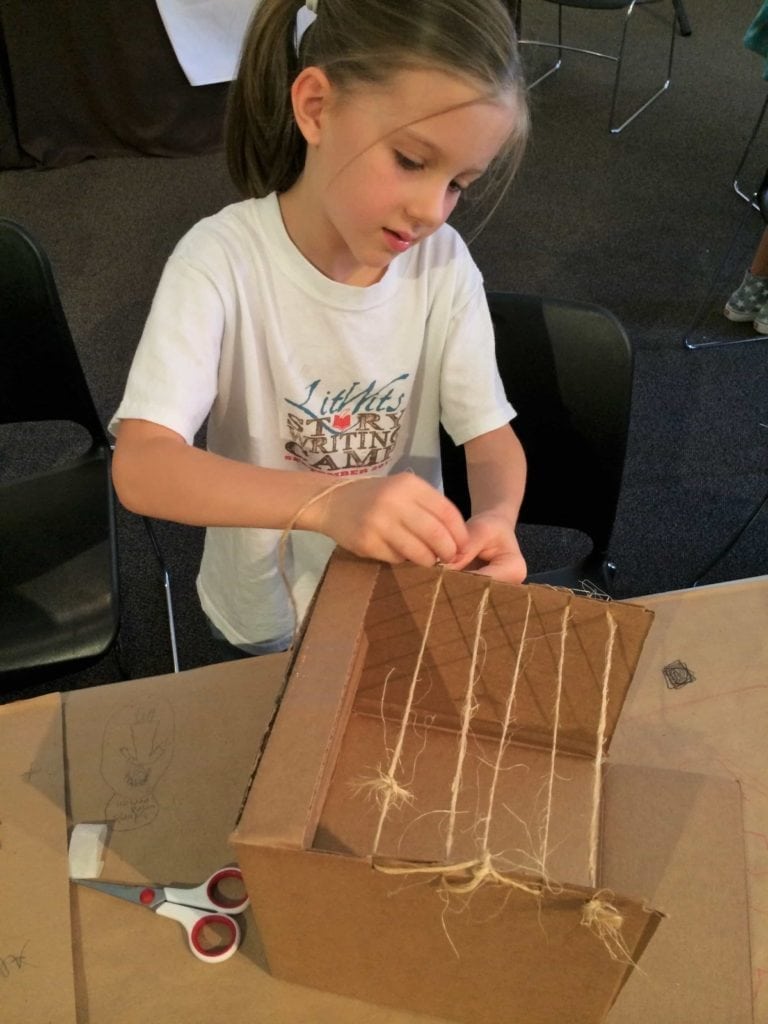
twine for stringing the roof frame, about 2y each
scissors
various colors of felt, fabric, and cardstock for furnishings
faux shrubbery and faux leafy twigs (or real) for weaving through the twine.
DIRECTIONS
Create an open-air roof: make a knot in one end of the twine and weave it through the slots on the sides, as shown above. Tape down the end, and cut off the extra.
Weave greenery across the top, between the strands of twine.
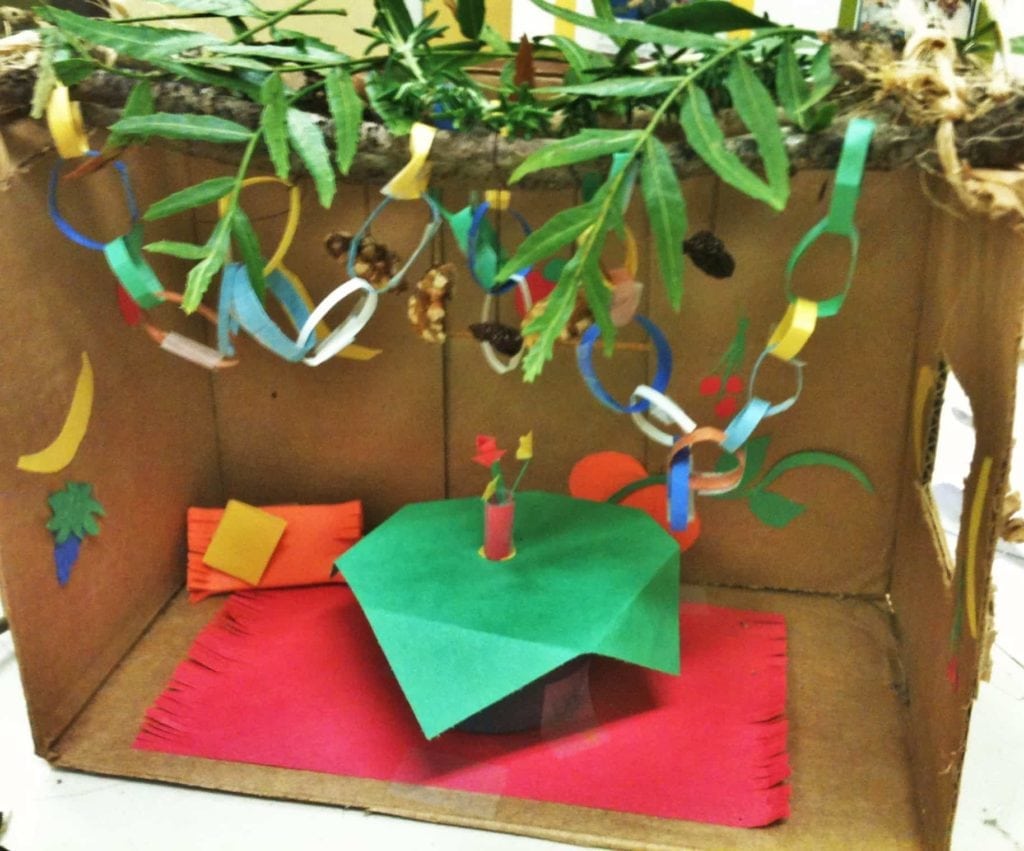
Build furniture and decorations from the colored paper, fabric, and felt:
Under Ella's direction the children cut different fruits from cardboard and colored them. They made strings of colored paper chains and crepe-paper flowers.
When they were all made, the children tacked the paper fruits ont eh walls. Charlie had come over; he strung the bright-colored chains across each other under the roof planks. —Ch. 12, "Succos"
Cleanup tip: As mentioned in our “Dust for Buttons” directions, this project is messy, but our kids had it all picked up in less than a minute after we said: “When the floor and tables are perfectly clean, you get to spend a penny in the candy shop!”
LitWits makes a small commission on supplies or books you buy through our Amazon affiliate links.
Creative Teaching Idea #9
Order, order! Without it, there's no story—just jumbled miscellaneous parts. This activity kids learn the important concept of the narrative arc (useful for all communications!), and understand how Sydney Taylor arranged All-of-a-Kind Family.
You can discuss the narrative arc in any of these three ways; we've found the first to be the most engaging, because it breaks up the discussion into bite-size chunks.
Introduce the concept of the narrative arc up front, but save the story's scenes to discuss as you go, pausing to "do what the characters did" in fun hands-on ways, while weaving in discussions and other worksheets.
OR introduce the concept and complete the worksheet before the activities, so kids have a review of the story fresh in their heads first, and you can remind them "where we are" on the arc as you go.
OR at the end of your activities, introduce the concept, then help kids figure out where the different parts of this story fit on it.
The narrative arc worksheet in our printables set summarizes the story by plot point, and has kids fill in some blanks.
Creative Teaching Idea #10
We all love collecting souvenirs that remind us of remarkable places we've been. Give your kids a travel sticker commemorating their literary journey through the Lower East Side, and your field trip inside All-of-a-Kind Family !
Give the kids the souvenir travel sticker included in our printables set, or have them design their own.
Kids might like to add their sticker to a reading kit, like an old briefcase (or faux vintage) or a suitcase that can hold a book, bookmark, glasses, snack, blanket, journal, pen, and whatever!
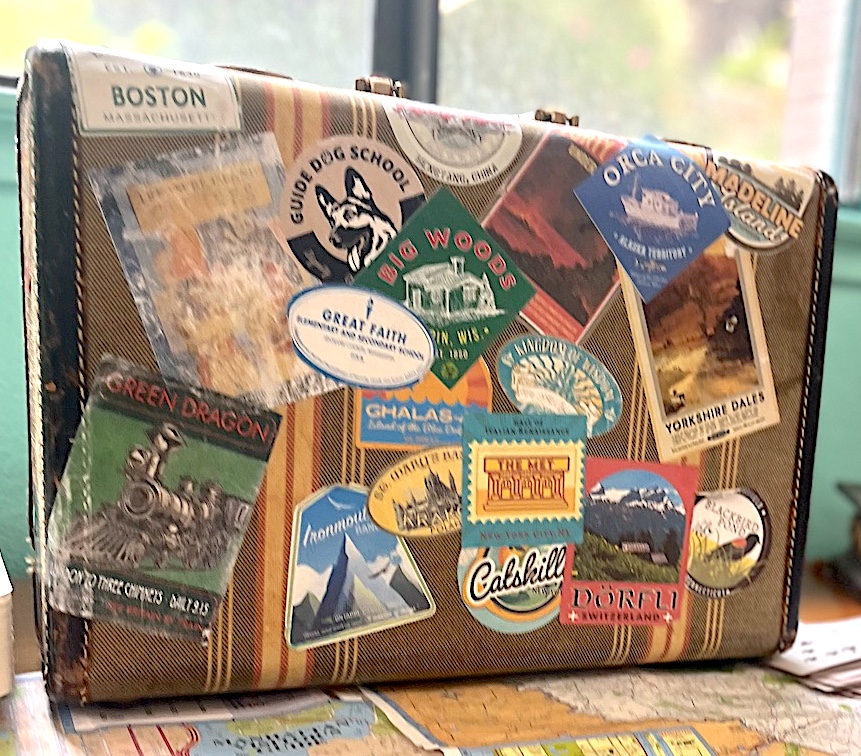
Or they might want to put it on a binder or water bottle. No matter where they see their sticker later, it will remind them of this wonderful journey they've taken with you!
LitWits makes a small commission on supplies or books you buy through our Amazon affiliate links.
Some of our activity ideas need printables or worksheets. Don't spend hours coming up with your own!
for teaching All-of-a-Kind Family by Sydney Taylor
Borrow or buy the book, if you don't already have it; you can also listen to an audio version. Reading on a screen should be a last resort. The sensory feel of the pages in your hand, or the sound of someone reading to you, is the first important step in sinking into the sensory experience of this story.
This book is best for ages 7-12. (You can read reviews on Amazon). Here's our short summary of the story:
As one Amazon reviewer puts it, “there’s something to be said for a book that makes you wish you’d been part of a poor immigrant family living in New York’s upper east side on the eve of World War I.” The much-loved classic All-of-a-Kind Family lets us join the ordinary yet extraordinary adventures of five sisters as they shop for penny candy, make friends at the library, do household chores “with a twist,” visit Coney Island, and celebrate Jewish holidays. This imaginative yet highly believable story is based on the author’s own childhood, and is a wonderful way to learn more about the Jewish faith — as well as the joy and value of old-fashioned fun.
LitWits makes a small commission on supplies or books you buy through our Amazon affiliate links.

You can have them read or listen to it on their own, or you can enjoy it together as a class. Most importantly, read only for fun! Tell the kids to simply enjoy the book, without any assignments in mind. It's hard to get caught up in a story if you're supposed to be looking for something that takes you out of it.

It's helpful to know this book's big teaching points ahead of time, and explore some fascinating links to add to your lessons. We already found those for you, so you too could enjoy reading the book without an assignment in mind. :) Our teaching ideas connect to these takeaway topics:
Jewish Tradition
All-of-a-Kind Family brings readers into the special and everyday rituals of Jewish life. Who doesn’t want to build their own Succah (and live in it for a whole month!) after reading this book? Show and explain the components of the Seder plate, if you bring one, and practice a little Yiddish. Savor the tastes and breathe in the scents of the Rivington Street market. Share more information about the holidays celebrated in the story: Rosh Hashanah and Yom Kippur, Succos, Passover, and Purim.
Rules & Responsibilities
There’s an obvious respect for Jewish traditions this book, but there’s also a serious focus on rules. Ask the kids to recall some of those rules, not just Judaic but household and societal rules. What’s the big deal about losing a book? How come a rarely-used parlor has to be dusted so perfectly? Why does Sarah have to eat that soup? Talk about the teaching of responsibility, but also point out the author’s need to get character across. For instance, we know that Sarah is respectful and conscientious as soon as she falls apart over the lost book. We know her mother is clever and fun because she creates the dusting game. We know Sarah has a stubborn, independent streak because she won’t just wolf down that soup and get it over with.
The Tenements
Throughout the story we catch glimpses of the challenges and traditions of life among the streets and tenements of New York’s Lower East Side, but there’s so much more to explore! Many of the struggles experienced by Lower East Side immigrants came from living in overcrowded, poorly lit and ventilated buildings. (At one time there were more people living there per square mile than anywhere else in the world!) Show pictures of the tenements (outside and inside) circa 1912 and discuss the dangers of challenges of living there.
See our blog post about visiting the Tenement Museum on the Lower East Side.
Additional topics
We encourage you to explore the supportive Learning Links at the end of this page, especially if you have older or more advanced kids. Make notes as you go, so you’ll remember what you want to share, and when.

Once you've read the book and have a feel for its big ideas, decide which activities to do. Don't feel you need to do them all! Choose one or two or whatever you think will best suit you and your kids. Having said that, here's a sample agenda for a 3-hour "field trip" through a great book.
This sample agenda can be followed in part or in whole, all at once or over weeks—whatever works for you.
Set the tone. Ask the kids how this book made them feel, and why, and what it made them want to do. Point out that the author intended to make readers feel, think, and act—that literature is never just entertainment.
Introduce the author. Next, introduce the author through the biography video provided, to pay tribute to the story’s creator and recognize how his/her life story shows up in the book.
Introduce the arc. Give a brief overview of the concept of the narrative arc (here's our explanation for kids). Assure the kids you'll go through it in detail together.
Find the setting. Get your bearings before you set off! Explore the setting through audiovisual aids, and talk about any setting-specific props,
GET HANDS-ON ! Do the activities you've chosen (we do them in story order, for the most part, but do whatever holds your kids' interest.) Talk about the meaning(s) embedded in each project. Pass around props at relevant points to give the kids a tactile, sensory engagement with a significant item, including food and sounds. Look for moments to pop in an audiovisual—hear that medieval chant! watch that Friesland horse run!
Worksheets: If you're using our worksheets, we suggest weaving them in between activities, to keep the writing light and energy high. This woven blend of doing, talking, and writing is what helps lessons stick, and makes this book more meaningful and memorable for your kids.
Timing: This means you're doing a new activity every 10-20 minutes, so things move quickly and the energy stays high. Of course, if your kids would benefit from a slower pace, by all means take your time. The point is to keep everyone relaxed and having fun—so they're better able to learn. Do whatever best serves your teaching needs, in the order and at the pace that keeps your kids respectfully, happily engaged.
Gather or buy your supplies. You can right-click anywhere on this page to print lists and instructions, if you'd like a hard copy—you'll need to open up the "Read more" drop-downs first.
Do the activity prep you'd rather handle yourself than have your kids do; this will depend on your time, kids' ages and abilities (and how important it is to you that the finished project looks as intended!).
Print the printables you're using, whether you made them or bought our set. Which brings us to . . .
Don't spend hours creating worksheets and printables to use with our activity ideas. We've already made those for you!
Buy our full set, for just about nothing.
Be sure to let us know how it goes! In fact, if your kids have a blast with this book, we'd love your help spreading the word about our resources for teaching children's literature.
Tag and follow us on Instagram, YouTube, Facebook, and Pinterest—and please leave a review!
for teaching All-of-a-Kind Family by Sydney Taylor
Aw, you’re just the right age, whatever that might be! Just kidding—we know what you mean. We find that 8-12-year-olds are consistently “ready to LitWit.” Generally speaking, their reading level is high enough to take on the vocabulary and syntax of literature, and they’ve acquired enough knowledge to grasp new ideas. Yet they’re still full of wonder, and are highly responsive to the “check this out!” nature of sensory immersion.
However, we often have mature kids of 6-7 in our experiential workshops, and sometimes fun-loving kids of 13-14. As a teacher or parent, you know best what your kids are ready for and interested in.
Yes. Our methods and ideas are adaptable to a wide range of abilities—kids particpate at their own level. The point isn't to come up with a stellar work of art or a perfectly polished project, but to have the experience of doing something the characters did, or a spin on it. After all, those characters were of mixed abilities, too!
This is true of mixed levels of enthusiasm as well. Kids who already love reading are thrilled to get the chance to extend the story, and kids who don't yet believe that stories are fun end up wanting to read (or listen to) more great books.
LitWitting is a flexible, fun way to teach, adaptable to all ages and abilities, so there isn't "one way to do it" —every educator's circumstances and children are different. Having said that, we suggest you follow the narrative arc, and we've provided an example of a simple plan above, under Prep Tips.
But the truth is, if you and your kids are having fun, and when it's over they want more (which means reading another great book), you’re doing it right!
Absolutely—but when you're finished, they'll probably ask if there's something else you can do, or have a suggestion of their own! And that's GREAT! It shows they're liking this kind of learning, and seeing that books can be experiences for them too, not just for the people in the story.
Get your feet wet with a project you think they'll like best, never mind how deep and meaningful it is—even if they're "over" this book, if they know you'll be LitWitting other books, they'll want to read them!
In our workshops, the very most reluctant readers are the ones who, when their mom comes to pick them up, are tugging at her sleeve and saying "sign me up for the next book they're doing!" (We love that they always say "doing!").
They're right here on this page! Just click the "Read more" under each activity for all the details.
You can right-click to print this page, if you'd like a hard copy—be sure to open all the drop-downs first, so the hidden contents will print too.
We keep all this info online so we can include helpful links, make updates in real time, add new ideas, and let you use our materials on a screen.
Sure you can, for your noncommercial use in your family, classroom, library, book club, or wherever! As long as you’re not calling your fun time a “LitWits” event or charging a fee, you can use our ideas and printables to do lots of wonderful things!
Please don’t forward your printables or make copies for people who haven’t paid for them, of course, out of courtesy and to honor our copyright, and per our Terms of Service.
Did you find what you were looking for? Do you still have a question? Are you feeling inspired, but maybe also somewhat overwhelmed? Never fear—we're glad to help! You're literally on our page about inspiring kids to read more, and we'd love to support you as you change the world, one book at a time.
Happy teaching,
Becky and Jenny
Sisters, best friends, and partners
for teaching All-of-a-Kind Family by Sydney Taylor
Like all children's literature, this book is chock-full of many subjects to explore—from Eastern European emigration to Jewish cuisine to the American industrial revolution and more! Browse these curated links to supplement your reading experience, research points of interest, and prompt tangential learning opportunities.
About the Book & Author
Community review - Goodreads
Reviews - Sonlight
Info/image of Sydney Taylor - TwoGirls100Books.com
Bio of author/image - Exodus Books
Blog post about the impact of this book (The Millions, Cynthia M. Coffel)
Reminiscences of the book (essay in Assignment magazine)
Story Supplements
Information and images about turn-of-the-century New York tenements
Audio from a Jewish market
Info/images of lower east side of Manhattan, c. 1900
Beautiful photo of immigrants on lower east side of Manhattan, c. 1900
Image of Coney Island, c. 1900
Info about Jewish immigration with image of Rosh Hashanah greeting card from the early 1900s
Image of 1917 Jewish WWI poster
Info about tenements
Info about Tompkins Square Library (Lower East Side)
Scarlet fever - Wikipedia
Info/images of old “freak” shows
Info/image of old poster of Bearded Woman
Info about scarlet fever
Beyond the Book
“Discarded Delights: The Joy of Ex-Library Books” - AbeBooks
Vintage endpapers - Endpaperarium
Jewish culture link collections
Interviews with children speaking Yiddish
Translations of Yiddish words and phrases
Info about Jewish prayer shawls
Info about Purim
Info about Purim (Chabad.org)
Info about Chanukah (Chabad.org)
Info about Passover
Preparing a Seder plate
Info about Rosh Hashanah
Info about Yom Kippur
Video of Vassar art students building a sukkot
Info/images of Wailing Wall
Info about contents of etrog box: Lulav, Hadass, Aravah, Etrog
Info/image of shofar (ram’s horn)
Info/image of menorah
Sukkots and accessories for purchase
Translation tool for Hebrew
History of Yiddish
Video with audio and lyrics of Yiddish folk song “Tumbalalaika”